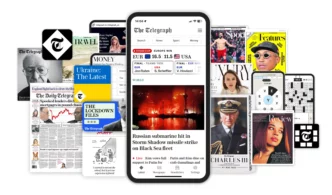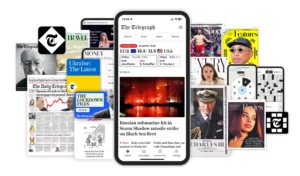

Polls haven’t always been a favorite among premium publishers, often dismissed as gimmicks. But their potential is undeniable: polls spark conversations, convert passive readers into active participants, and deepen audience relationships. In-article polls boost time-on-page, provide valuable first-party data like user demographics, and convert readers into tailored offers. Meanwhile, in-email polls drive direct engagement and retention.
At their core, polls rely on one thing: asking the right questions. Opinary, a Berlin-based startup, specializes in running polls for publishers like the Financial Times, The Times of London, and Der Spiegel. Backed by an editorial team managing a library of over 1.5 million polls, they’ve seen firsthand what works—and what doesn’t. We asked them: What makes a good question?
Opinary’s signature format, a speedometer-like scale, allows readers to weigh in on polarizing topics without forcing black-and-white answers. This spectrum approach fosters nuanced perspectives, giving users the chance to position themselves in the “grey areas” of a debate.
Here is some advice on how to write great polls that will engage your audience.
PART I: Writing Questions
1. Get to the core.
To write an engaging question, it is best if you address the essence of a current debate. Ask yourself whether your question deals with the most important aspect of the topic or if is there is a bigger picture that should be addressed.
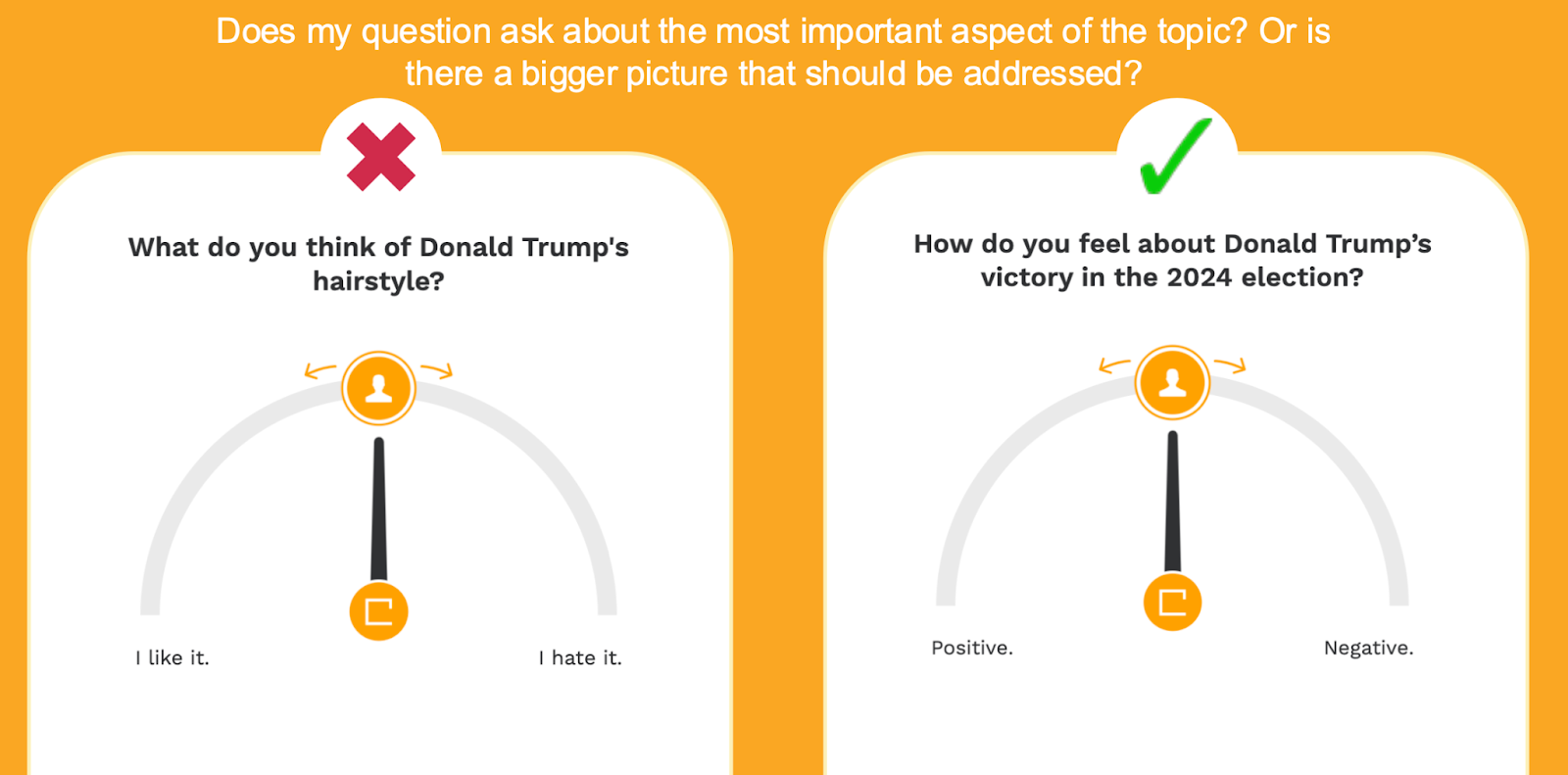
2. Make it interesting.
Is the question you pose interesting for your audience? Great! An interesting topic will gain much more attention than an average one.
We know, not every topic is inherently exciting. But every topic has an interesting angle to it. It’s worth looking back at the debate you talk about and considering which point of it could also create interest within your audience.
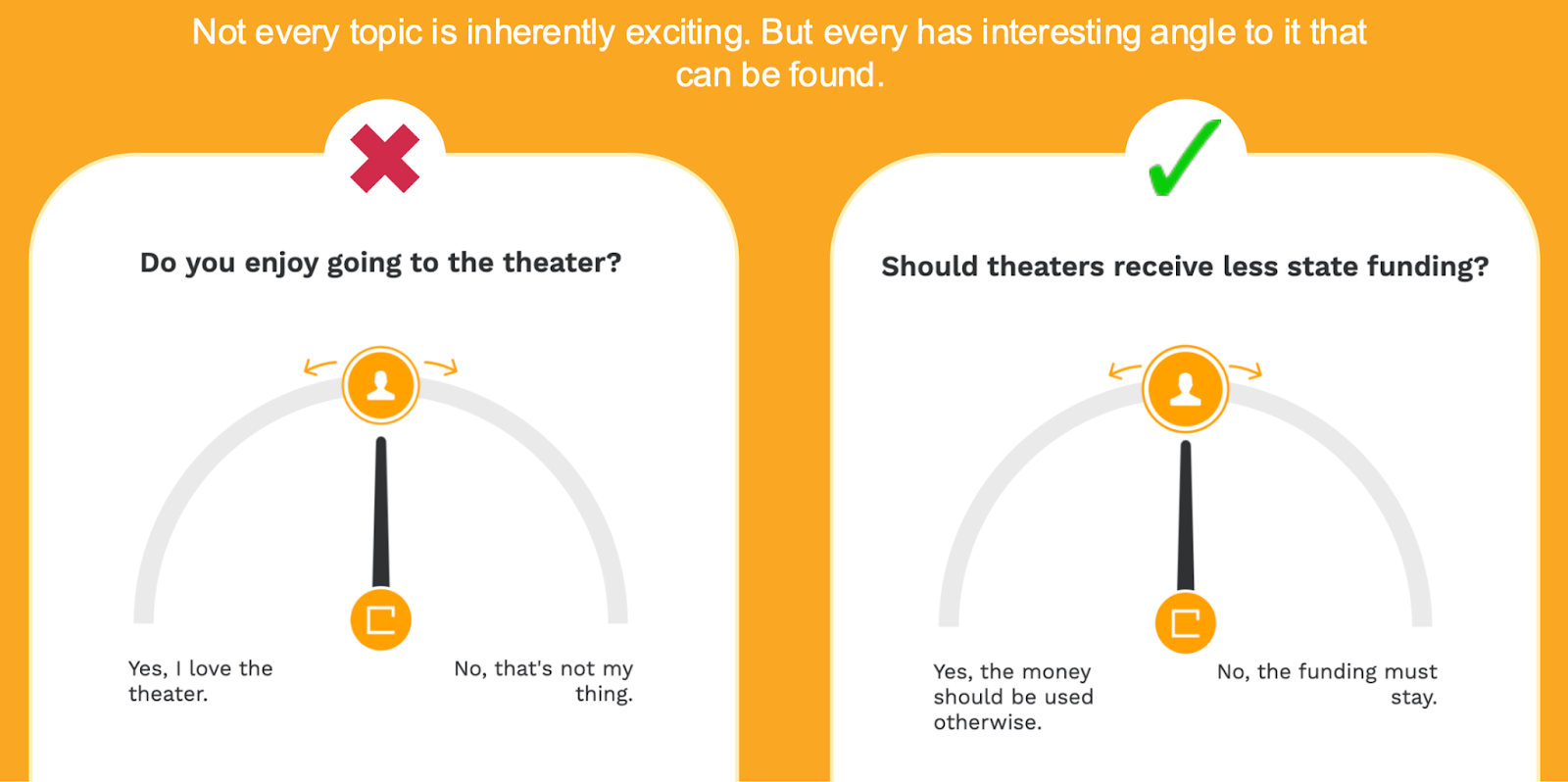
3. Check relevance.
Is the question relevant to all readers? When your question is too narrow, it can exclude parts of your audience by making them unable to participate. Try to ask your question in a broader and less specific way unless you aim to appeal to a very pointed target group.
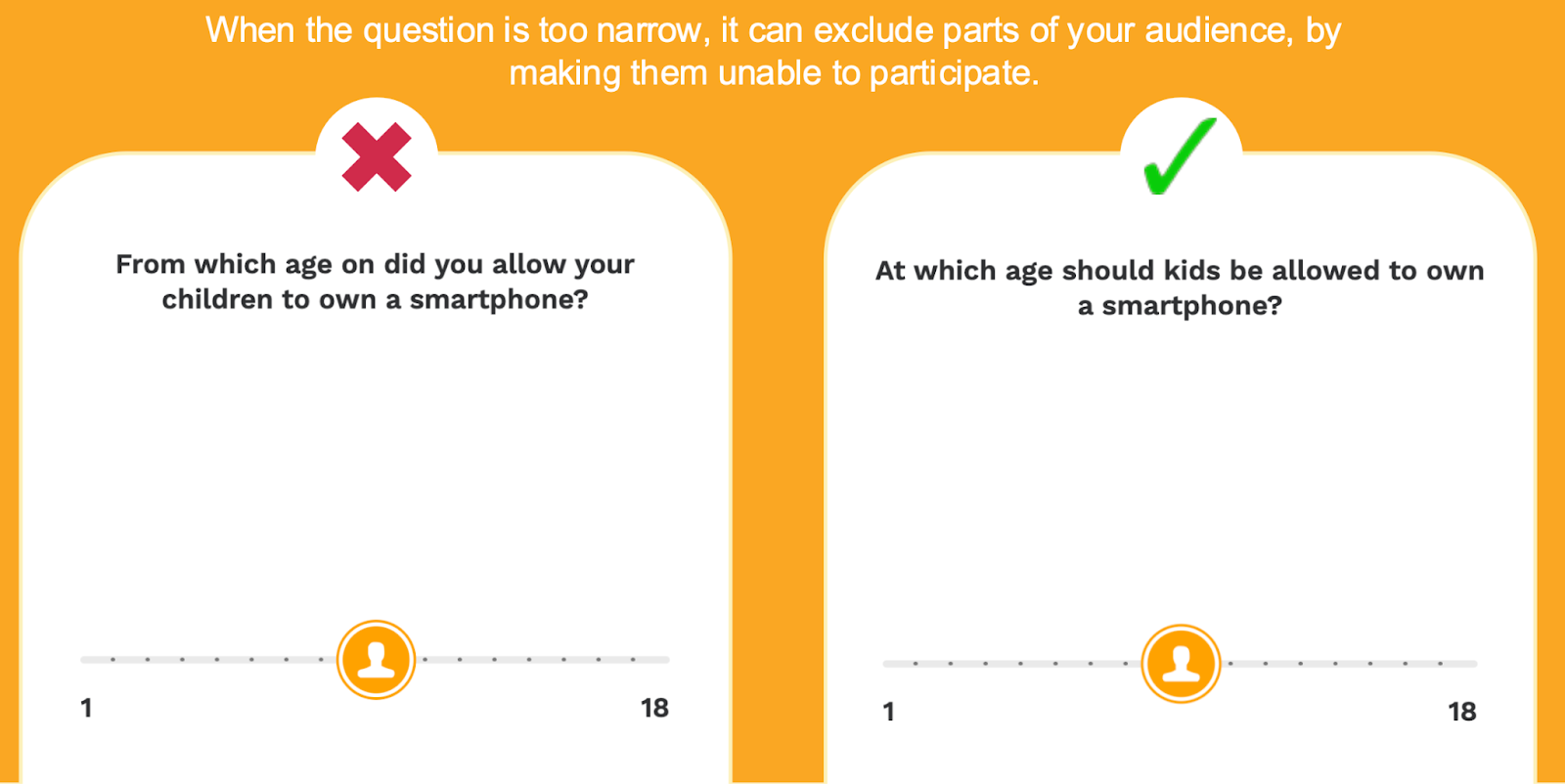
4. Stay neutral.
Ensure your question is unbiased. The poll should address the topic in a politically neutral way. Your answers can still contain opinions but shouldn’t be stereotypes.
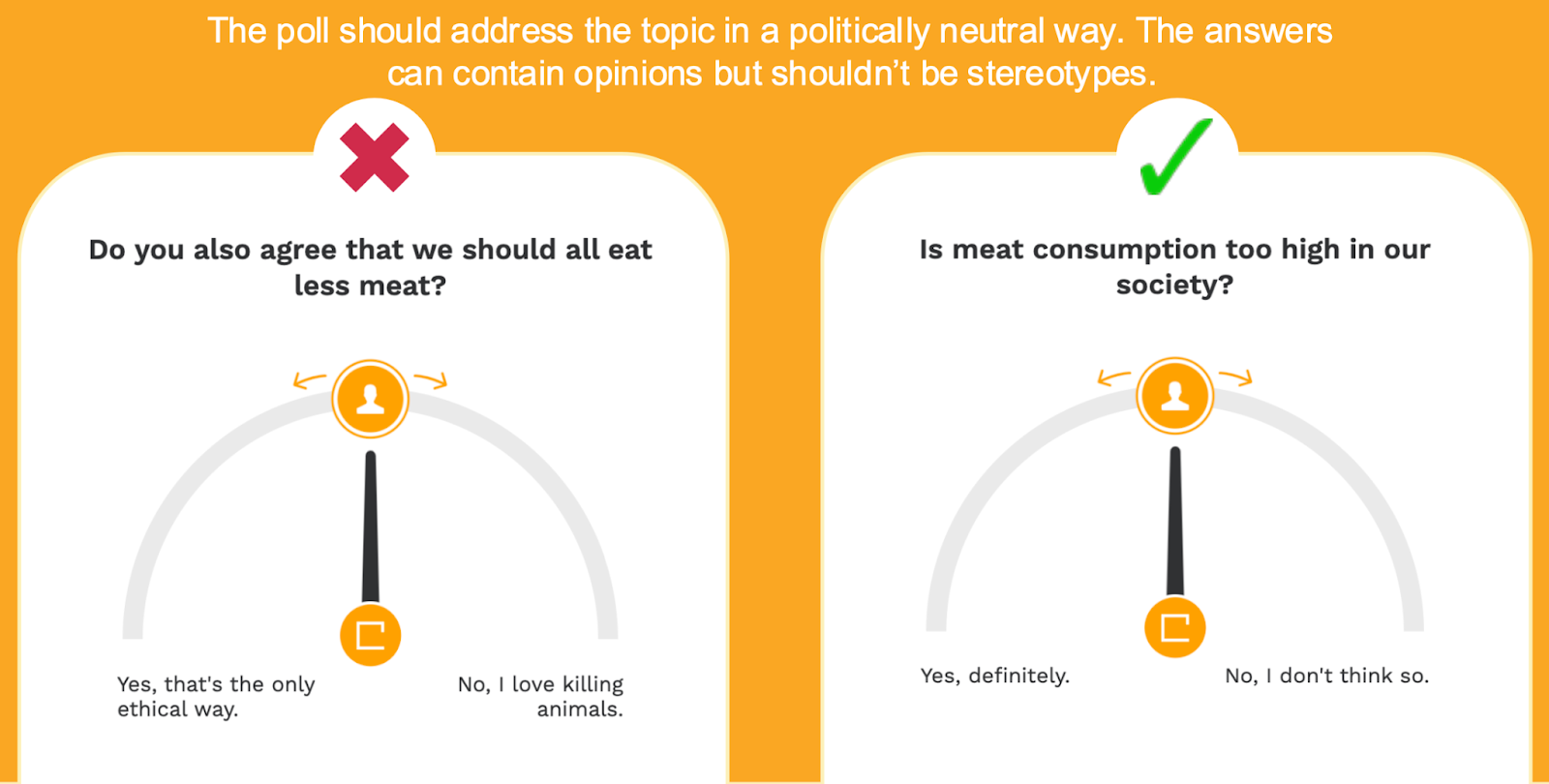
5. Keep it short.
Readers should be able to grasp the content of your question quickly. Keep questions short and easy to understand. If the wording can be simplified, do so—but without losing the core message.
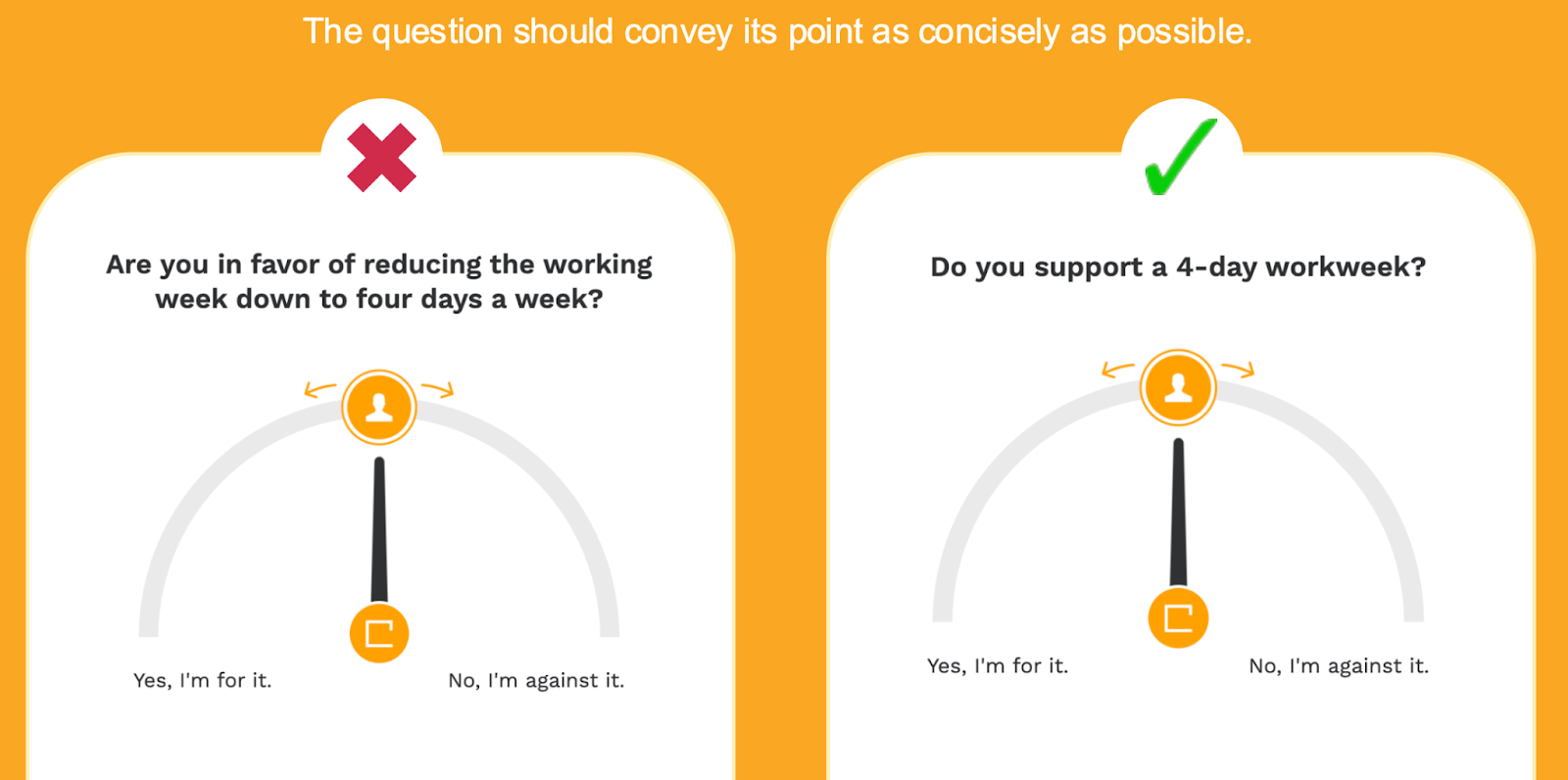
6. But not too short!
Your question must contain all information that readers need to understand the discussion. So, if it is too short, don’t shy away from adding necessary details.
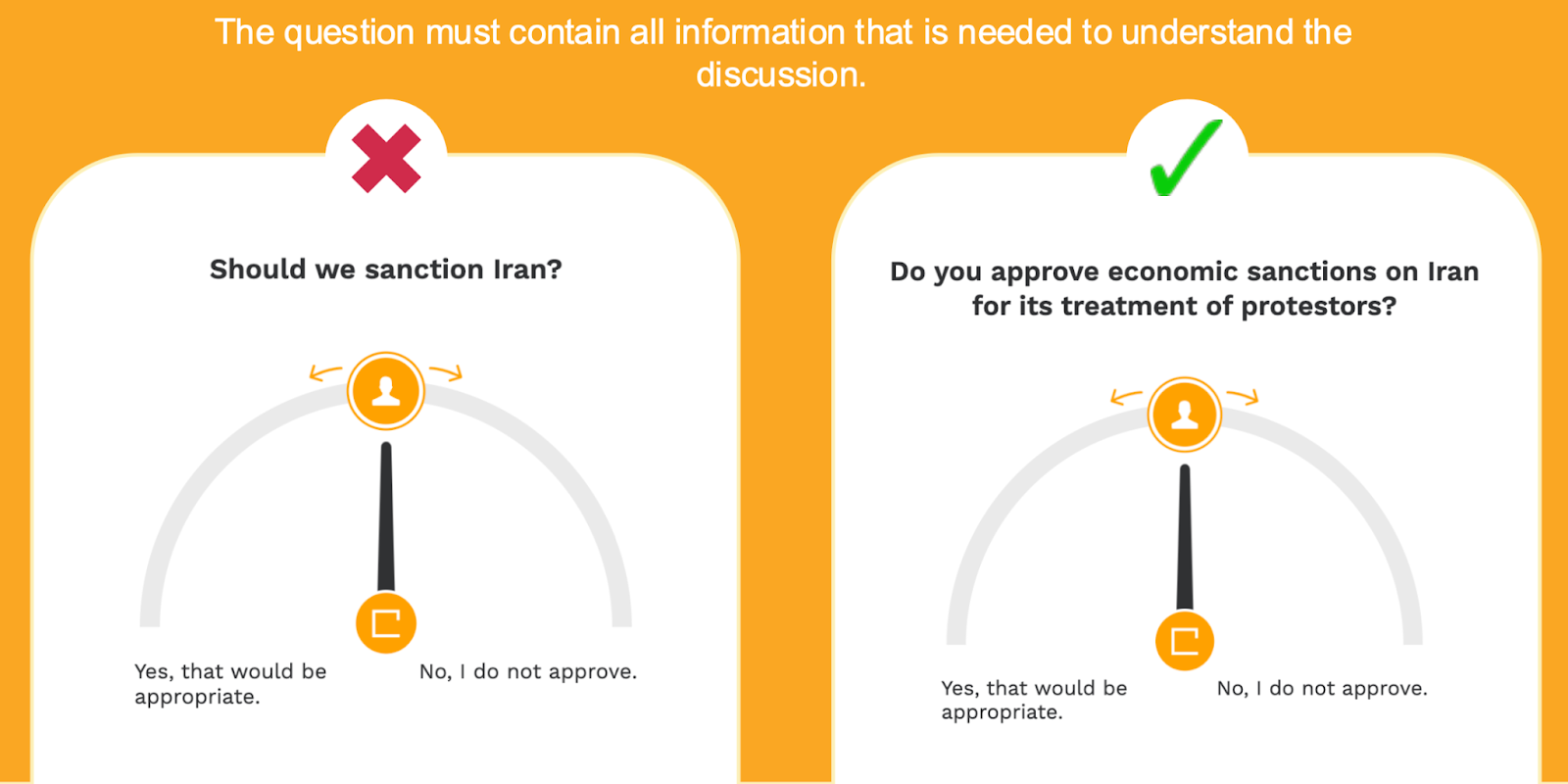
7. Stay true to your tonality.
Every publisher and each news section have a distinct style. Your polls need to mirror this to not feel out of place.
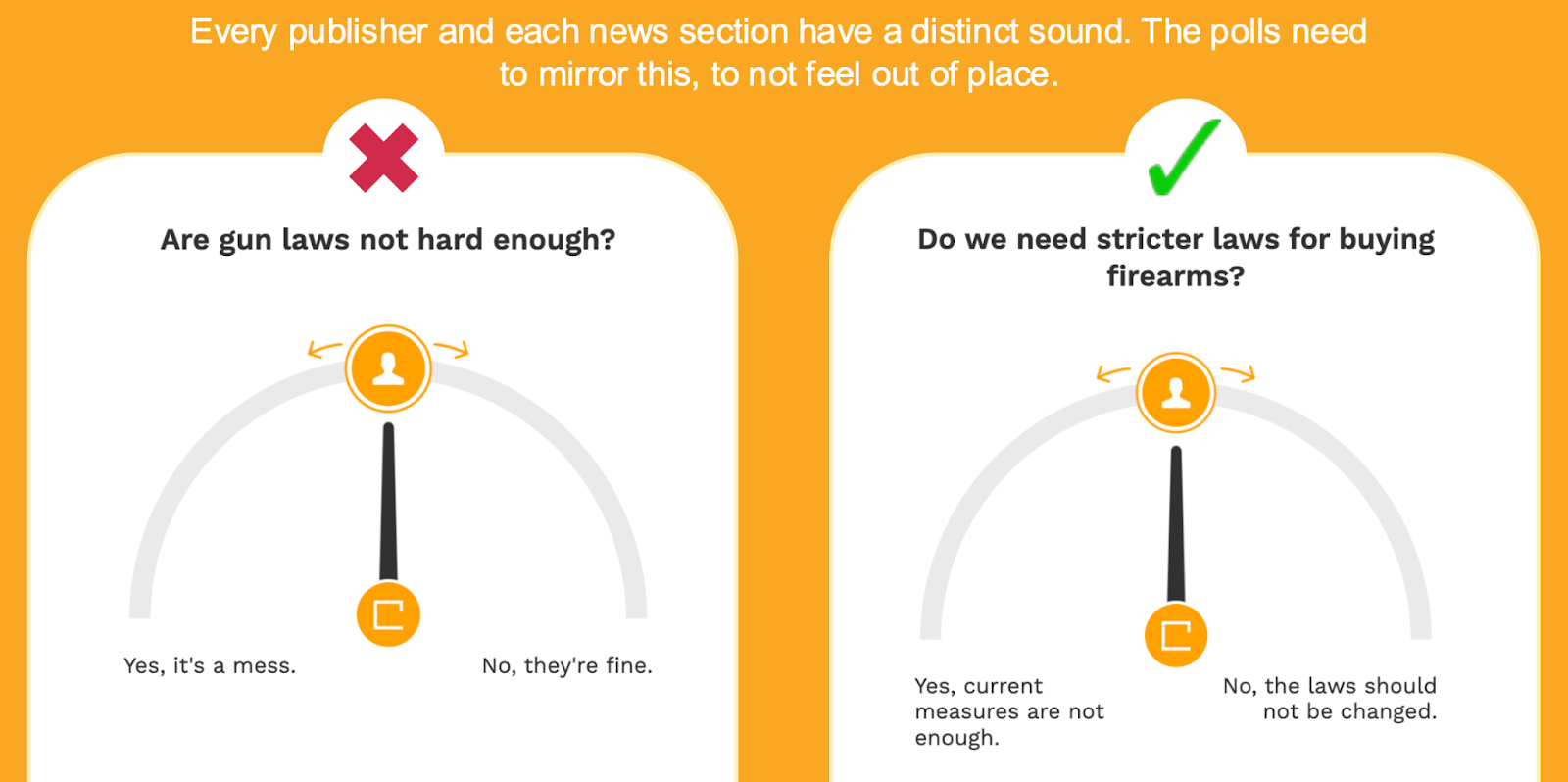
8. Be mindful of the topic’s sensitivity.
Some topics are more emotionally charged than others and need to be handled with care. If you still wish to ask a sensitive question, it can help to approach it from a meta-level perspective to check its appropriateness.
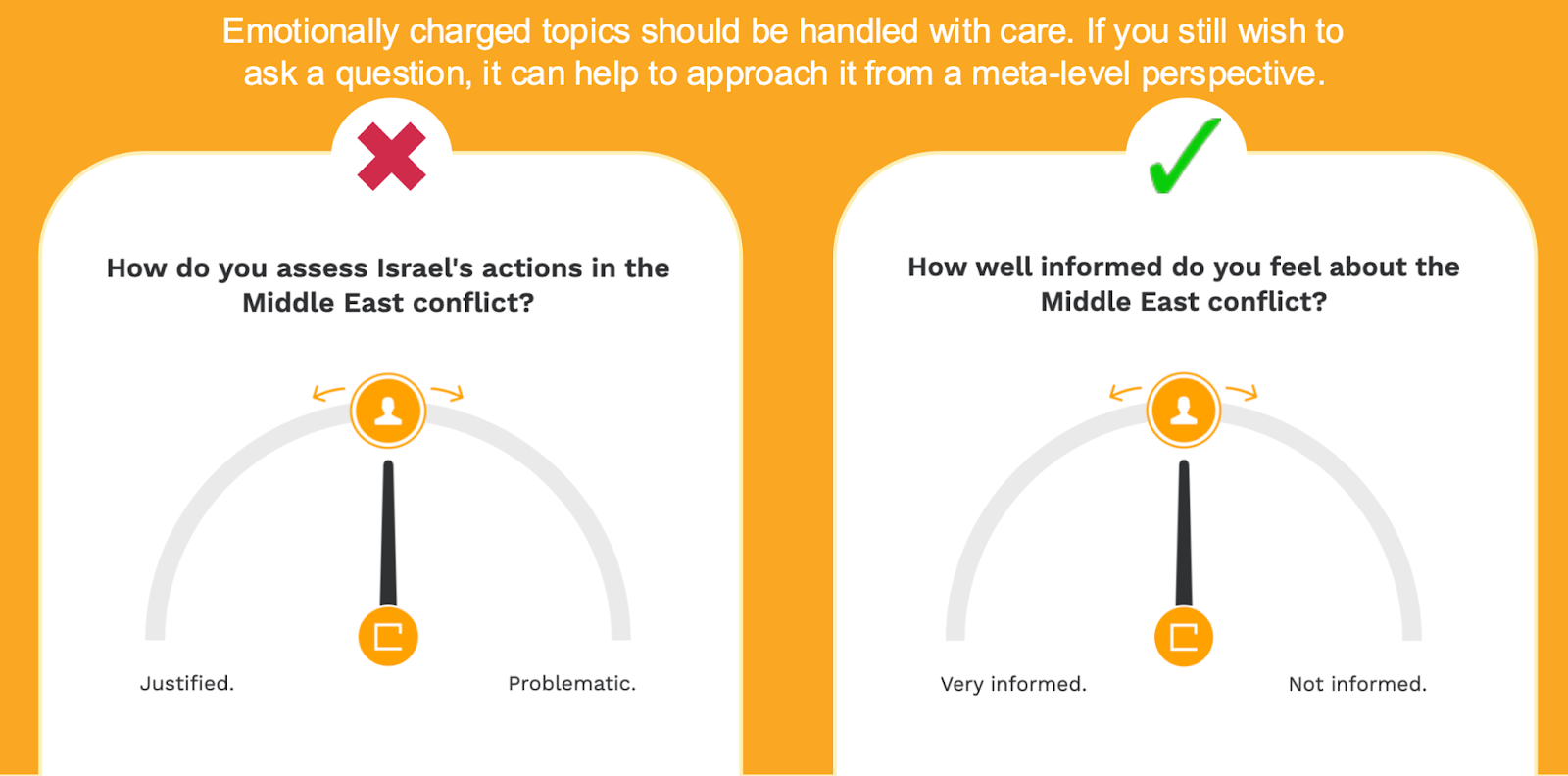
9. Neutrality vs. manipulation.
Frame questions in a way that avoids manipulation or exploitation. Keeping questions neutral helps maintain integrity.
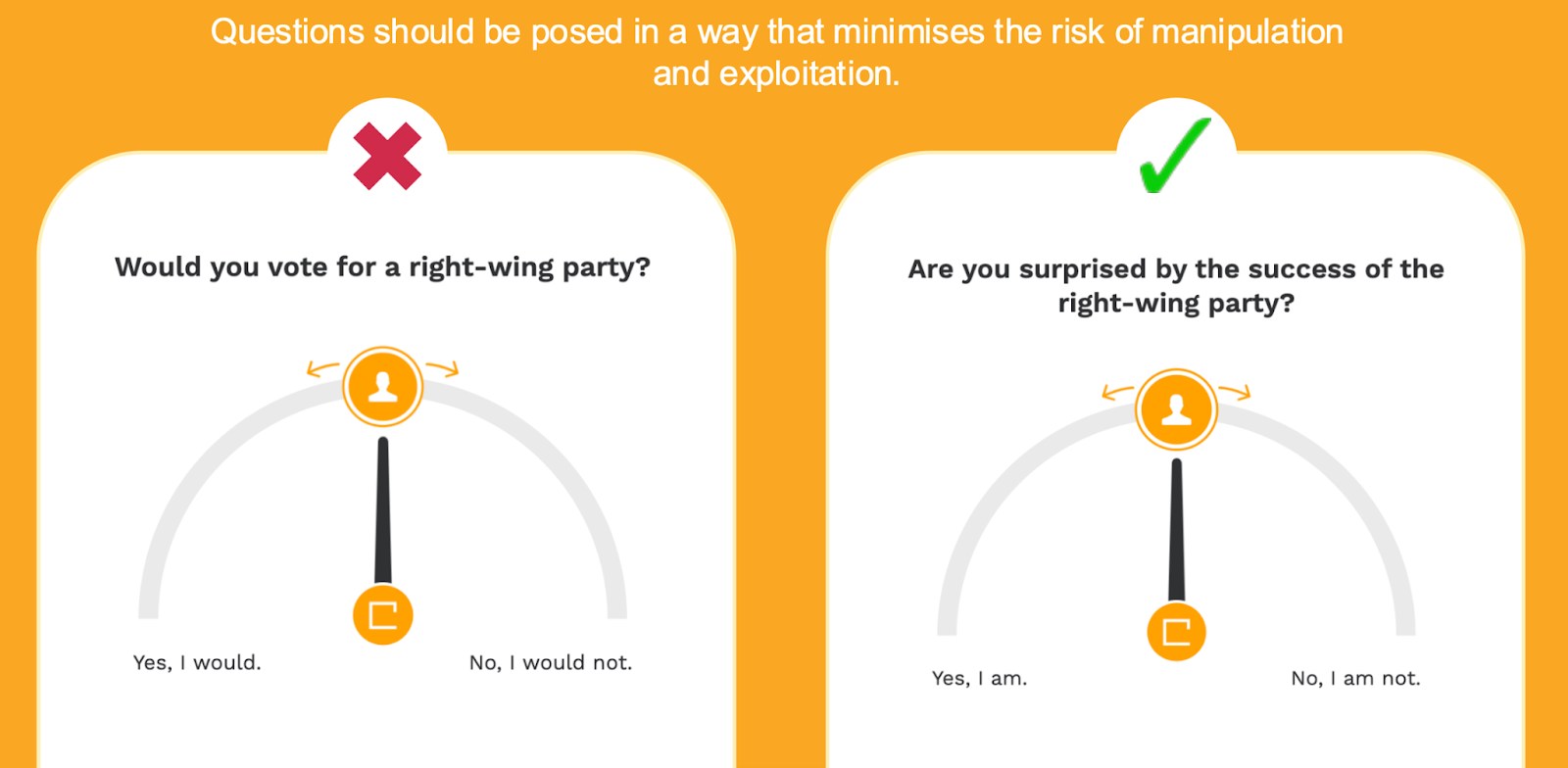
PART II: ANSWERS
10. Keep it general.
The more diverse the arguments of a debate, the more general the answer options of the poll should be. If the answers cover the entire debate, you’ve done a good job.

11. Represent opposing views.
Poll answers usually express opposing opinions to give the readers the chance to express their own degree of involvement on the speedo’s arch. The answer options should be framed in a way that they are equally “far” away from the center, avoiding extreme positions.
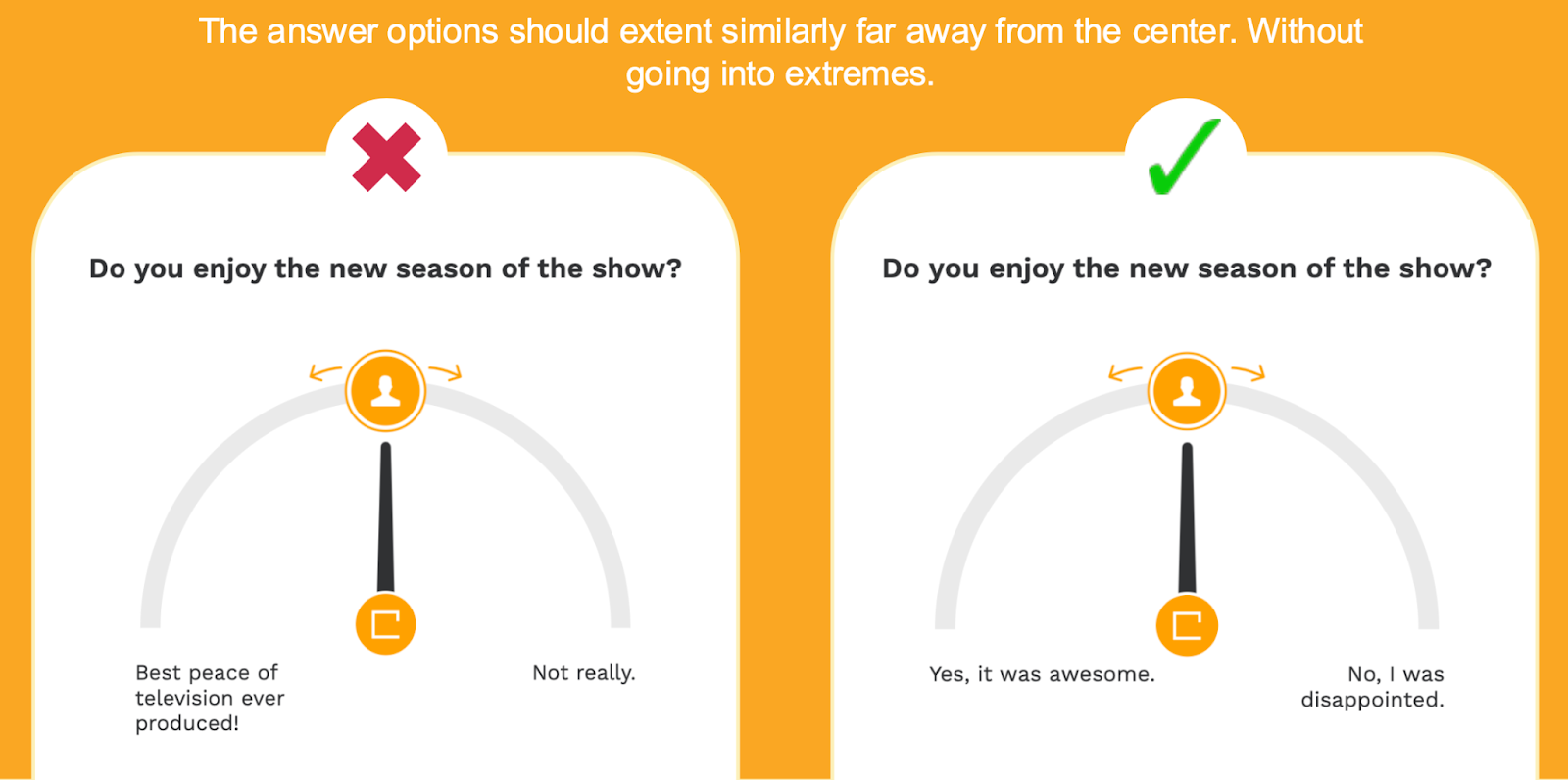
12. Provide real answers.
The answer options can be used to elaborate arguments for and against. But they must always directly address the question asked.
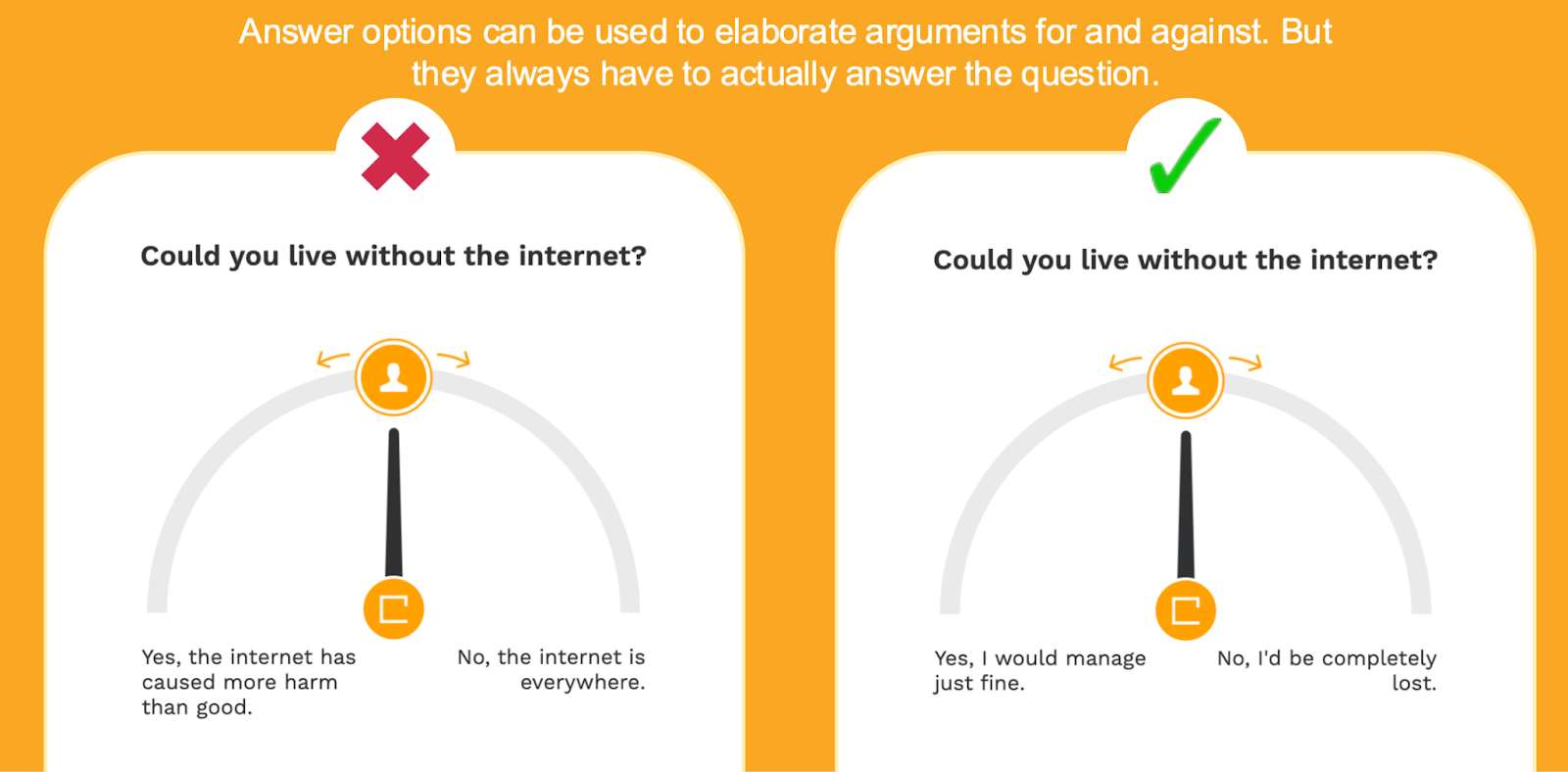
Crafting engaging polls is both an art and a science. By asking the right questions and providing thoughtful answer options, you can turn passive readers into active participants while fostering deeper connections with your audience. Whether you’re sparking debates or gathering insights, polls offer a unique way to elevate audience engagement.











